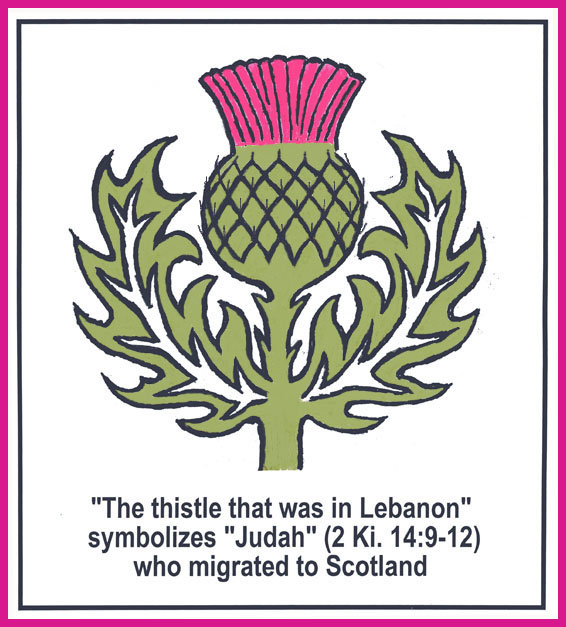Were Scythians Israelites?
.


Israelites, Scythians and Saxons Without A King
The following
facts connect both Saxons and Scythians with Israel. Israel was to be
"many days WITHOUT A KING" (Hos. 3:4) "The most ancient
account of the Saxon government on the continent exists in this short
but expressive passage of Bede: 'The ancient SAXON'S HAVE NO KING, but
many chiefs set over their people, who, when war presses, draw lots equally,
and whomsoever the chance points out, they all follow as leader, and obey
during the war. The war concluded, all the chiefs become again of equal
power." In the Lindenb. Gloss. 1347, the following occurs: 'TWELVE
Ethelings governed over the land of the Saxons; and whenever war arose
in that land, the Saxons chose one of the TWELVE to be king while the
war lasted; when the war was finished, the TWELVE became alike.'"
(Sharon Turner's Anglo-Saxons 1:20)
Israelites, Scythians and Saxons Had Divining Rods
The SAXON custom of DIVINING by RODS or "AUGURY by WANDS" (Tacitus' Germania 9:10) can be traced to the Israelite practice mentioned in Hosea 4:12 which says, "My people ask counsel of their STOCKS, and their STAFF declareth unto them." "They cut a small branch of a fruit-tree into TWIGS, marked them, and scattered them at random on a white vest. The priest, if it were a public COUNCIL, or the father, at a private CONSULTATION, prayed, gazed at heaven, drew each three times, and interpreted according to the mark previously impressed. Alfred also says they cast lots with TWIGS (Sharon Turner's Anglo Saxons 1:223). Herodotus says, "SCYTHIA has an abundance of soothsayers who foretell the future by means of a number of WILLOW WANDS. A large bundle of these WANDS is brought and laid on the ground. The soothsayer unties the bundle, and places each wand by itself, at the same time uttering his prophecy" (Herod. 4:67) Isaiah 19:11-15 mentions "branch or rush" being employed by Egyptians.
Israelites, Scythians and Saxons Had Similar Religions
An inscription of Tiglath-Pileser says that "There fell into my hands altogether, between the commencement of my reign and my fifth year, forty two countries, with their kings. I brought them under one government. I placed them under the Magian religion." (Rawlinson's translation). This was the worship of the sun without temples or altars but in groves and on hills using fire (Rawlinson's Herodotus Note, vol. 1p. 348). The same was true of Scandinavians who forbade the use of temples (Mallet Northern Antiquities ch. 6). Same with the Germans who built no temples (Kohlrausch's History of Germany intro.). Like the Persians they (Germans) revered the sun and fire. The religion of Odin included the belief in a beneficent ALL-FATHER in HEAVEN, who made the heaven, and earth, and air out of nothing; in the future purifying the world by FIRE, a catastrophe connected with the embodiment of evil., who is frequently described as a SERPENT or a DRAGON; in a NEW WORLD that is TO COME, and in the advent of "the POWERFUL ONE" for JUDGMENT.
Israelites and Scythians Had Groves But No Images
A German (Scythian) custom mentioned in Tacitus' Germania 9:10 that seems to be Israelite is as follows:"The deities of the Germans are NOT confined WITHIN WALLS, nor FASHIONED INTO any mortal SHAPES; they hallow GROVES and WOODS, and call by the name of gods that hidden presence which is felt by reverence alone." Many passages in the Bible mention "GROVES" as places of Israelite worship (1 Kings 14:15) and the biblical command to "not make unto thee any GRAVEN IMAGE or any LIKENESS of ANYTHING" is also well known. Immediately before the captivity, "Ephraim was joined to IDOLS," but neither in Scythia nor in Germany did they have IMAGES so they must have repented somewhat. Neither did they have kings for "the children of Israel shall abide many days WITHOUT A KING, and without a prince, and without a sacrifice, and WITHOUT AN IMAGE, and without an ephod, and without teraphim" (Hos. 3:4).Scythians made no idols (Herodotus 4:59) except in the worship of Mars which was probably mere SCIMITAR-worship that may be alluded to sarcastically in Ezekiel 21:9-10..
Israelites-Scythians-Saxons Were Civilized, Wise and Unconquerable
"Round the Black Sea ... are to be found, if we EXCEPT SCYTHIA, the most uncivilized nations in the world. No one could claim that the rest have any of the arts of civilized life, or have produced any man of distinction" (Her. 4:46). Aeschylus says "The SACAE (or SCUTHS) were noted for their GOOD LAWS, and were preeminently a RIGHTEOUS people." Colossians 3:11 contrasts Barbarians with SCYTHIANS. Thucydides says, "In respect of MILITARY STRENGTH and NUMBER of SOLDIERS, NO single NATION, either in Europe or Asia, could MATCH the SCUTHS" (Thuc. 2:97 spoken about 420 B.C.). As Psalm 105:20 says, "He INCREASED his people Israel greatly, and made them STRONGER than their enemies." Herodotus adds, "They have, in one respect ... shown themselves WISER than any other nation upon the face of the earth.... Possessing no houses but waggons, and carrying these about wherever they go, accustomed, one and all, to fight on horseback with bows and arrows, and dependent for their food not upon agriculture but upon their cattle: how can they fail of being UNCONQUERABLE, and even UNASSAILABLE?" (4:46). "NO WEAPON that is formed AGAINST THEE shall PROSPER" (Isa. 54:17).
Their oaths
were accompanied by CEREMONIES IDENTICAL WITH those of the MEDES; they
used skulls as drinking cups, like the Northmen of later years; their
weapons were the spear, the battle-axe and the bow; they made BOOTHES
like the Israelites; they had fables of GRIFFINS, the representations
of which on the Scythian tombs are almost exactly like the WINGED LIONS
of the Assyrians.
Israelites
and Scythians Boiled Meat By Burning Bones
Describing
their sacrifices, Herodotus says, "After flaying the beasts, they
take out all the bones, and put the flesh into BOILERS or cauldrons of
a large size, then placing the BONES of the animals beneath the cauldron,
they set them ALIGHT, and so BOIL the meat." (Her. 4:61) In Ezekiel
24:5 we read, "take the choice of the flock, and BURN also the BONES
under it, and make it BOIL well." Professor Rawlinson thinks both
these passages refer to the same custom.
Israelites and Scythians Didn't Eat Pigs
Finally Herodotus
says regarding sacrifices,"they NEVER USE SWINE; nor, indeed, is
it their wont to breed them in any part of their country" (Her. 4:63).
Yes "the SWINE ... IS UNCLEAN to you" (Lev. 11:7). Strabo says
of the Dacians "that the care of WORSHIPPING the Supreme Being is
GREAT among this nation, is not to be doubted, after what Posidonius has
related, 'and they even ABSTAIN FROM ANIMAL FOOD from religious motives,'
as likewise on account of the testimony of other historians" (Strabo
7:3:4).
Israelites
and Scythians Both Without Flax
Herodotus
says, "HEMP groweth abundantly in this land of Scythia, and of this
the people MAKE GARMENTS that are very like to garments made of FLAX.
These people possess neither houses, cities, nor cultivated land: but
lived in waggons and on the produce of their cattle." This reminds
us of Hosea 2:2-14 which says, "Plead with your mother, plead ...
Lest I strip her naked, and set her as in the day that she was born, and
make her as a wilderness, and set her like a DRY LAND, and slay her with
thirst ... For she said, I will go after my lovers, that give me my bread
and water, my wool and my flax, mine oil and my drink ... For she did
not know that I gave her corn, and wine and oil, and multiplied her silver
and gold, which they prepared for Baal. Therefore will I return, and take
away my corn in the time thereof, and My wine in the season thereof, and
will RECOVER my wool and MY FLAXgiven to cover her nakedness."
Israelites-Scythians Dwell Among Graves and Create High Mounds
Israel dwelt among the monuments -- the BARROWS and MOUNDS of Southern Russia, the CAVES in which the Getae lived in memory of that to which Zalmoxis retired -- and ate unclean food. Therefore Isaiah 65:4 says Israelites "remain among the GRAVES, and lodge in the MONUMENTS; that eat swine's flesh, and broth of abominable things is in their vessels." Plint N.H. 4:12 calls them "CAVE-DWELLERS." "Set thee up WAYMARKS, make thee HIGH MOUNDS" (Jer. 31:21). "They (Scythians) set to work, and raise a VAST MOUND above the GRAVE all of them vyeing with each other, and seeking to make it as tall as possible" (Her. 4:71).
Israelites And Scythians Both Had a Drinking Problem
Drunkenness was prevalent among Israelites (Deut. 21:20-21). "Woe to the ... drunkards of Ephraim" (Isa. 28:1-3). "Howl all ye drinkers of wine" (Joel 1:5). "Woe to them that rise up early in the morning, that they may follow strong drink; that continue until night, till wine inflame them" (Isa. 6:11-13). When Spartans want to drink purer wine than normal, they give the order to FILL SCYTHIAN FASHION (Herodotus 6:84). The SCYTHIANS were driven out of Media by being invited to a feast and made DRUNK and then murdered (Her. 1:106).
Israel and Scythia Didn't Intermarry with Other Nations
Tacitus says the Kimbri were Germans and "the Germans never to have intermarried with other nations; but to be a Race, Pure, Unmixed, and stamped with a distinct character. Hence a family likeness pervades the whole though their numbers are so great" (Tacitus de Morib. Ger. c.v.). Thus was Israel sifted through a sieve, but not one grain was allowed to fall to the ground (Amos 9:9). "SCYTHIANS are dead-set AGAINST FOREIGN WAYS" (Her. 4:75). Their destiny was to "DWELL ALONE." (Num. 23:9)
Israelites
and Scythians Were Known As Arians
Ezekiel 1:1 mentions the River Chebar (Habor) where Jews were taken captive in Babylon. But Reuben, Gad
and half-Manasseh were placed by Tiglath-Pileser in the mountain district
of Great MEDIA, a region expressly called HARA (1 Chr. 5:26; Ar being
a mountain). In fact all ten tribes of Israel were placed in the "cities
of the MEDES" (2 Ki. 17:6). Herodotus 7:62 says, "The Medes
were once universally known as ARIANS." HARA was named ARIA, ARIANA
and ARACHOSIA by the Greeks (see Ptolemy). It contains the city of HARAT.
According to the black obelisk discovered in the ruins of the palace of
Nimrod which is now in the British Museum, the people or leader of the
ARIANS was called ESAKSKA (Isaac) and their principal cities were "Beth-Telabon,
Beth-Everak and Beth-Tsida" in 670 B.C.
This information connects
the Israelites with the ARIANS. Also the Arian language is Hebraic, and like Hebrew, has three sibillants (Moore, Lost Tribes, pp.288-290, 299). Diodorus Siculus says, "many conquered peoples were removed to other homes, and two of these became very great colonies: the one was composed of Assyrians and was removed to the land between Paphlagonia and Pontus, and the other was drawn from Media and planted along the Tanais (the River Don in ancient Scythia -- the modern Ukraine, north of the Black Sea, in southern Russia)." (2:43) Notice the areas from which these colonies came -- Assyria and Media. The very areas to which the House of Israel was taken captive! "So was Israel carried away out of their own land TO ASSYRIA unto this day" (2 Kings 17:23). "The king of Assyria took Samaria, and carried Israel away INTO ASSYRIA and placed them in Halah and in Habor by the River of Gozan, and in the CITIES OF THE MEDES" (2 Ki. 17:6). These ARIANS must have migrated to Thrace
because, according to Stephanus, Thrace was called ARIA. Herodotus also mentions a people "north of Thrace" "who dress in the Median fashion" and "claim to be colonists from Media" (5:9).
From Thrace they
migrated to Germany since Tacitus mentions the HARII there in SE Germany
(Ger.43). The Thracian SCYTHIANS pricked and stained their bodies (Herod.
5); so did the ARII of Germany (Tacitus); the BELGAE of Britain (Caesar
de Bell. Gall.), and the PIKS of Norway and Scotland (Herodian; Claudian).
We believe that ARIANS or Nordic peoples are found primarily in NW Europe today. Their mission is to BLESS all nations of the
earth (Gen. 22:18; Micah 5:7). Rawlinson (in "Herodotus", essay iii, p.325) says, "that the Medes were a branch of the great ARIAN family, closely allied both in language and religion to the Persians (Keturah's descendants?), another ARIAN tribe, seems now to be generally admitted....Darius Hystaspes, in the inscription upon his tomb, declares himself to be a Persian, the son of a Persian, an ARIAN of ARIAN descent." (p.77. Who Are We? By Harrison).

According to Herodotus 1:110, the Magi lived next to the Budii in MEDIA. Daniel was made "Rab-Mag" by Nebuchadnezzar (Dan. 2:48). The name "Mag" in Pehlvi denotes "Priest." The Magi of MEDIA visited the child Jesus because they were Israelites.
Uniting the Stick (Scepter) of Judah and the Stick (Scepter) of Israel
In 1603 King James VI of Scotland became King James 1st of England as well. He united the two into one. King James VI of Scotland claimed the Lord made him king over Israel. He struck a gold coin called the "Jacobus" and had it inscribed in Latin with the prophecy of Ezekiel 37:22: FACIAM EOS IN GENTEM UNAM, which translates from Latin to English as "I will make them one nation".The coin was called the "Unite." (see below) The first Union Jack was formed in 1606, then in 1801 the cross of St. Patrick was sandwiched in between the flags of Scotland and England. This "Union of Jacob" or "Union Jack" was the result of the progressive merging of the inhabitants of the British Isles. Then later they became a "multitude of nations" (Gen. 48:19) or aka "fulness of gentiles" (Rom. 11:25)
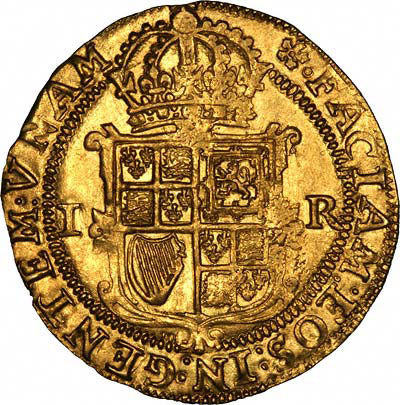
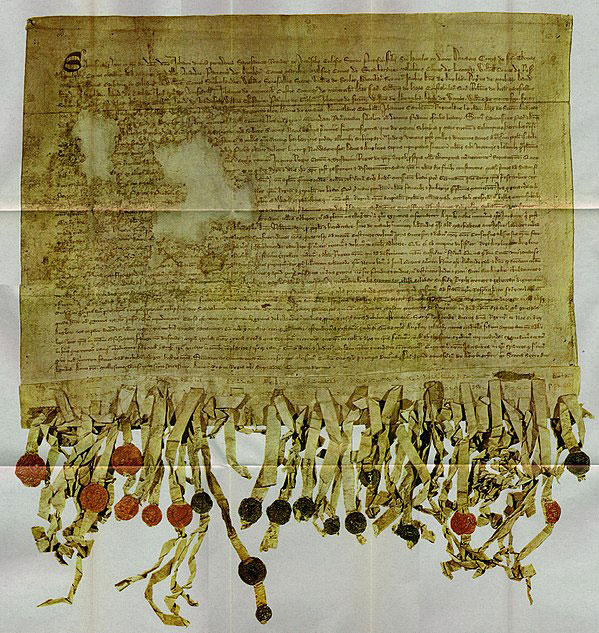
The Scottish Declaration of Independence
The Scottish Declaration of Independence, a prized document attested by Robert the Bruce's barons in Parliament assembled, dated A.D.1320, asserts that the Scottish nation -- with a king-list of one hundred and thirteen monarchs -- migrated to the British Isles from Scythia by way of Spain. The document emphasizes an Israelite context -- specifically that the migration occurred "1200 years after the outgoing of Israel" (from Egypt). This would indicate a period of the 3rd-2nd centuries B.C.
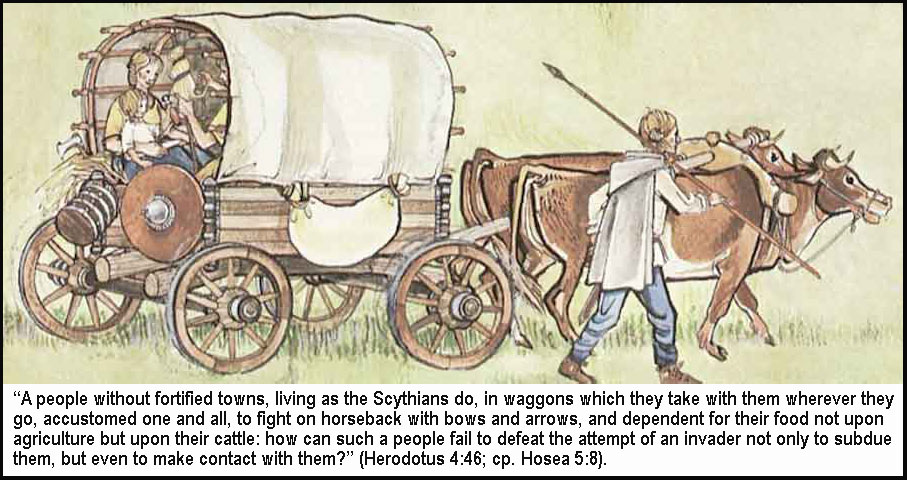
Are The SCOTS From SCYTHIA?
When Israel was in Egypt, she named a town SUCCOTH (Heb. "Cottages" or "Huts"). Upon travelling to Palestine, Israel named three towns SUCCOTH. The booth or tent was the home of a wandering people. Today we still have words that mean "Wander" such as SCOOT, SCAT, SCOUT and SKATE. They called themselves SCOLOTI, but the Greeks called them SCYTHIANS, SCUTHAI or Nomades (Herod, Melp. 5,7,6,11). A medieval Jewish writer says one branch of the Israelites"evaded the calamity (of an Assyrian captivity), going off with their flocks and turning nomads, and that the chief or prince whom they appointed could muster 120,000 horse and 100,000 foot" (Gawler's Our Scythian Ancestors Identified with Israel, p.9). This agrees with the apparent large army of Israel in 2 Chronicles 28:5-8 and its apparent small population a few years later in 2 Kings 17:24-31 when only 27,290 Israelites were taken captive (Werner Keller, The Bible As History, p.246). They moved north to the Black Sea area which they called SCYTHIA. They were "descended from SLAVES" (Pliny N.H.4:12). Jordanes says the SCYTHIANS are tall, have blue eyes and blonde hair (De reb. Get. 24).
Another branch of the Israelites was taken captive to Assyria and Media (2 Ki.18:11) and "to the river Gozan" (1 Chr. 5:26). Ptolemy mentions the ASCITAE of Arabia (6:7) and the ASCOTANCAE east of the Caspian (6:14). As Diodorus Siculus says, these SCYTHIANS were "of mean origin on the Araxes" ("Araks" today) (2:3). This is the same place Israelite captives were deported to in both waves (1 Chr.5:26; 2 Kings 18:11) since the "Gozan" is just south of the Araxes. The date of the escape of Israel from Media and Assyria is about the year 612 B.C. Jonah was sent to denounce and warn Nineveh because of the Israelites dwelling there. For instance Tobit of Naphtali dwelt in Nineveh (ch. 14). In about 620 B.C. (100 years after Israel had been removed from Palestine), Jeremiah was told to "Go and proclaim these words toward the NORTH (Black Sea area) , and say, Return thou backsliding Israel." (Jer. 3:12). These SCYTHIANS then returned about 612 B.C. (?) and "Nineveh was captured and destroyed by the SCYTHIAN army ... and the Assyrian empire was at an end" (Encyc. Brit. 2:857, 1943). But they marched into Palestine "doing no harm to anyone"(Herodotus 1:104-105). King Josiah then invited them to keep Passover (2 Chron. 34-35). Most returned to the Black Sea region about ten years later (Keller, p.273). But some of the SCYTHIANS who had liberated Palestine remained. A town in Israel, Beth-Shean, was later (c. 300 B.C.) called SCYTHOPOLIS (30 miles north of the city of Samaria) in honor of their liberating visit.
The events of the Book of Judith, in the Apocrypha, occurred in Nebuchadnezzar's reign. He sent Holofernes and his Assyrian army to punish Judaea, but Holofernes was confronted by ISRAELITES, from the Ten Tribes, who were newly RETURNED from the Captivity. The place where Holofernes pitched, was between Geba and SCYTHOPOLIS -- the city recently built by the Scythians -- the RETURNED ISRAELITES. Judith risked her life and slew Holofernes. The Assyrians fled. Then good King Josiah kept a very memorable Passover "and all Judah AND ISRAEL that were present" (2 Ki. 23:22; 2 Chr. 35:18) about 612 BC.
Meanwhile, Herodotus tells us that the Israelites in Media -- the SCYTHIANS in "Upper Asia" (4:1) -- lived "beyond the Araxes" (1:201,209,216; 4:11) and came from "across the Araxes into Cimmeria" (Her.4:11), Cimmeria being the Crimea area. "The SCYTHIANS state their origin to be one of the youngest of the nations, and that their national existence had only lasted one thousand years up to the time when Darius (the Persian) invaded their territory" (Herod. 4:5). This would be from 1447 B.C. when Israel became a nation at Sinai to 486 B.C., the end of Darius' reign, a total of 961 years. "Those are the ten tribes, which were carried away prisoners out of their own land in the time of Osea the king, whom Salmaneser the king of Assyria led away captive, and he carried them over the waters, and so came they into another land. But they took this counsel among themselves, that they would leave the multitude of the heathen, and go forth into a further country, where never mankind dwelt. That they might there KEEP their STATUTES, which they never kept in their own land. And they entered into Euphrates by the narrow passages of the river. For the Most High then showed signs for them, and held still the flood, till they were passed over. For through that country there was a great way to go, namely for a year and a half: and the same region is called Arsareth (The river Siret or Sereth is still in Romania (23:826, A1) and the prefix "Ar" means "city" in Hebrew. SCYTHIA used to be situated where Romania is today.) Then dwelt they there until the latter time" (2 Esdras 13:40-46). This word Arsareth is almost identical with the words rendered "another land" in Deut. 29:28. The word "ar" in Chaldee means a river, as Rawlinson points out in Five Great Monarchies (vol. 1 p.62)
Both 2 Esdras 13:39-45 and Herodotus 4:11 place Israel NW of the Black Sea. From the capital of Media we travel 1500 miles in a straight line to the north of Moldavia. Here is still the river Sereth, with a town of the same name, almost at its source. Herodotus 4:11 says, "the nomadic tribes of SCYTHIANS, who lived in Asia, being hard pressed by the Massagetae, were forced across the Araxes (Called Aras today which separated Armenia from Media) into Cimmeria (Crimea area and NW in Russia) (what is now SCYTHIA is said to have been once inhabited by Cimmerians.)" Therefore, the SCYTHS must have originally dwelt south of the Araxes in Media -- exactly where the Israelites dwelt. The Massagetae in 450 B.C. when Herodotus wrote, were living on the northern bank of the Araxes because Cyrus in 530 B.C. had to cross the Araxes to invade their country and the Massagetae ate the fish from the Araxes (Her. 1:201-215).
Diodorus says that the SCYTHIANS, formerly inconsiderable and few, possessed a narrow region on the Araxes; but by degrees, they became more powerful in numbers and in courage. They extended their boundaries on all sides, till at last they raised their nation to great Empire and glory (Dio Sic, p. 127). They added the CAUCASUS Mountains to their territory, and all the plains toward the ocean and the Palus Meotus, with the other regions near the Tanais. They subdued many nations between the Caspian and the Meotis, and beyond the Tanais. The SAKAI, the MASSAGETAI, and the ARIMASPOI came originally from the SCYTHIANS. (Dio. Sic. p.127). They crossed the Araxes and invaded the Kimmerians in the seventh century B.C. and dwelt from the Tanais to the Danube, taking a westerly direction; but they had a colony south in Thrace and one northward consisting of the tribe of ROXOLANOI who dwelt above the Borysthenes, the modern Dneiper. Strabo says, "Above the Boristhenes dwelt the last of the known SCUTHOI, the ROXOLANOI. Some dropped off at the north end of Lake Urmi into the mountain valleys of the Kurds. These became in later ages the NESTORIANS. Having crossed the Araxes they passed a place called PENYAK (a Hebrew term for God to show his face), and then on to BARKH-EL (Hebrew meaning God's blessing), and a little farther on they came to a stream called ISRAEL-SU which led them to the shores of the Black Sea. Other SCYTHIANS were known as GETOE or GOTHS. The GETOE were the same as the DACI, or as they were more anciently called DAVI (Strabo 7). A search in Stieler's Hand Atlas along the most natural route to follow, reveals the striking names of GUMRI, MT. KUMRY, DELI MUSA and MELASGERD.
Herodotus visited SCYTHIA about 450 B.C. Herodotus mentilons that SCYTHIA was divided into the Royal Tribe and FIVE other tribes; the former being "the largest and bravest, and looking down upon all the other tribes in the light of slaves." Professor Rawlinson thinks that the Royal SCUTHS were composed of THREE great tribes. This would make EIGHT total just as EIGHT tribes of Saxons entered England. (Kent, Sussex, Wessex, Essex, Bernicia, Deira, East Anglia, Mercia).
The SCYTHIANS called water "Thami" just as the English call a river the Thames. A SCYTHIAN town is called "Kar-kinitis" just as an English town is called "Kaer-leon." A number of rivers in SCYTHIA have their English counterpart: The Ister becomes the Isis and Thamisis. The Porata (Pruth) becomes the Furth or Port, Ford or River Forth. The Hypanis (Boug) becomes the Avon and Apan. The Tiarantus becomes the River Trent. The SCYTHIAN capital city was called SAKIZ (Rice The Scythians, p. 45). Two of the SCYTHIAN tribes were known as the MASSAGETAE and the DAHANS or DANA (Encyc. Brit. 17:566, art. "Persia") which we know as MANASSEH and DAN.
These SCYTHIANS were expelled from MEDIA (Herodotus 4:1 & 4) made NO IDOLS (4:59), WOULDN'T EAT or sacrifice PIGS (4:63) or LEARN HEATHEN WAYS (4:76). These cattle ranchers "fight on horseback" and live in "waggons" (4:46) just as they used covered wagons in Numbers 7:3. They were "famous and eminent for valour and martial affairs" (Diodorus 2:3). "The LAWS, customs, and manners of the SCYTHIANS" says Epiphanius, "were received by the other nations as the standards of policy, civility and polite learning." Aeschylus, the Greek poet, tells us, "The SACAE were noted for their GOOD LAWS, and were preeminently a righteous people." Barbarian and SCYTHIAN are contrasted in Colossians 3:11. The Jewish Encyclopedia says, "The identification of the SACAE or SCYTHIANS, with the Ten Tribes because they appear in history at the SAME TIME (Strabo and Homer say 8th cent. B.C.; Herodotus says 7th they appeared in Europe ) and very nearly in the SAME PLACE (Araxes is just north of Gozan), as the Israelites removed by Shalmaneser, is one of the chief supports of the theory which identifies the English people, and indeed the whole Teutonic Race, with the Ten Tribes. " (p.250, vol. 12). The Anglo Saxon Chronicle (891 C.E.) begins by saying that the Britons came from Armenia and the Picts (of Scotland) from the south of SCYTHIA. King Alfred said the Picts and SCOTS both came from SCYTHIA. The idea that the SCOTS came from SCYTHIA is found in Nennius and most legendary accounts and also in unedited versions of the Venerable Bede who said that the Gaels who invaded SCOTLAND from Ireland came originally from SCYTHIA and the Cimmerian Chersonesus (Crimea). The Cimmerians were a "SCYTHIAN tribe" (Encyc. Brit. 2:857). Ireland was known as SCOTIA at first. Settlements were made to the bigger island until, by about 500 A.D., a separate nation of SCOTLAND came into being. For a time, Ireland was called SCOTIA Major and Scotland SCOTIA Minor. It is interesting that the Highland Scotch won't eat pork.
The Scottish Declaration Of Independence is an ancient document in the Register House of Edinburgh which states that the SCOTS (Lowlanders) came from SCYTHIA via the Mediterranean Sea, sojourned in Spain, then came to SCOTLAND 1,200 years after the deportation of Israel (478 A.D.). "We know and from the chronicles and books of the ancients, we find that among other famous nations our own, the Scots has been graced with widespread renown. They journeyed from Greater Scythia by way of the Tyrrhenian [Mediterranean] Sea and the Pillars of Hercules [Straits of Gibraltar], and dwelt for a long course of time in Spain among the most savage tribes… Thence they came, twelve hundred years after the people of Israel crossed the Red Sea, to their home in the west where they still live today." Scandinavia was anciently called SCATHANAVIA. The SCYTHIANS were originally called "Arami" (Pliny N.H. 6:19). Sharon Turner wrote, "The first appearance of the SCYTHIAN tribes in Europe may be placed, according to Strabo and Homer, about the eighth, or according to Herodotus, in the seventh century, before the Christian Era. The first scenes of their civil existence ... were in Asia, to the east of the Araxes." Nennius' History of the Britons tells us that Saxons came from GERMANY which was known as SCYTHIA (Paragraphs 31, 37 & 50). Diodorus Siculus repeatedly calls all GERMANY by the name of SCYTHIA (5:355). Strabo says, "All the nations toward the northern parts, the ancient Greek writers call SCYTHIANS, and Celto-SCYTHIANS" (11:507). As Xenophen said, "In Europe the SCYTHIANS bear sway" (Mem. Soc. 2:10). Pliny 4:13 says the Prussian coast "lay opposite to SCYTHIA, distant a day or two's sail." Lempriere's Classical Dictionary defines "SCYTHIA" as "Tartary, Russia in Asia, Siberia, Ukraine, the Crimea, Poland, part of Hungary, Lithuania, the northern parts of GERMANY, Sweden, Norway" etcetera. (p.568). SCYTHIANS migrated all the way from Palestine to the Crimea and then to Germany and ultimately to England and SCOTLAND. "For lo, I will command, and I will sift the House of Israel among ALL the NATIONS, like as corn is sifted in a sieve, yet shall not the least grain fall upon the earth" (Amos 9:9).
Did Albion Come from Albania?
We know Israelites were taken captive to Media. Just north of the Caucasus Mountains, the Caspian shore was anciently called ALBANIA (Strabo's map 25 A.D.). Solinus 20 says they have BLUE eyes. This was no doubt an Israelite location. Apparently the inhabitants next migrated to ALBANIA in SE Europe and then to ALBION (Ptolemy's map 160 A.D.) -- later known as Britain. Himilco, 400 B.C., speaks of the British Isles as the lands of the HIBERNI and the ALBIONI. The Scots called themselves ALBANIANS.

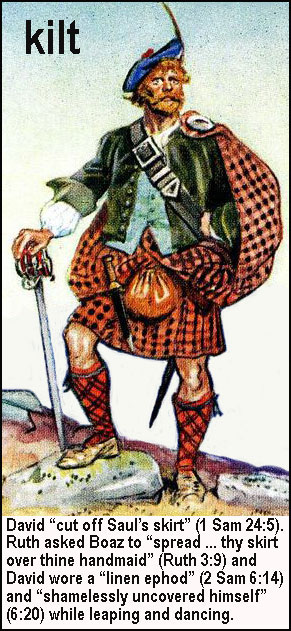
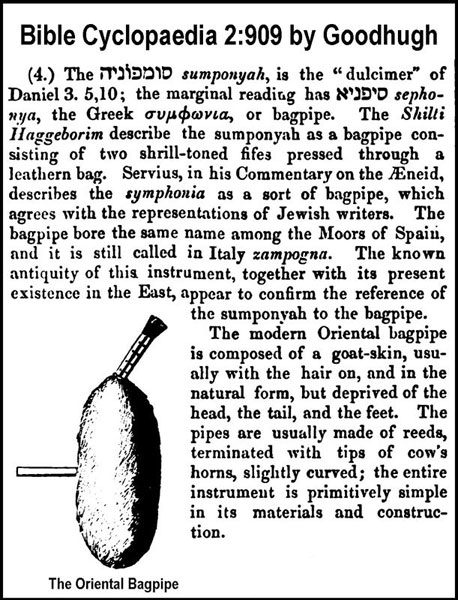
Are BAGPIPES Mentioned in the Bible?
In 2 Chronicles 5:12 several musical instruments are mentioned: 1. cymbals, 2. psalteries, and 3. harps. We know what cymbals and harps are. But what are PSALTERIES? Strong's Concordance gives the number 5035 for PSALTERY.The definition is: "nebel; a SKIN-BAG for liquids (from collapsing when empty); hence, a vase (as similar in shape when full); also a lyre (as having a body of like form):-- bottle, pitcher, psaltery, vessel, viol." What musical instrument is made of a SKIN BAG that COLLAPSES when empty? Only a BAGPIPE, which collapses when the air is let out.
"It is impossible to say positively with what instrument the nebel of the Hebrew exactly corresponded. From the fact that nebel in Hebrew also signifies a wine bottle or skin, it has been conjectured that the term when applied to a musical instrument denotes a kind of BAGPIPE." (PELOUBET'S Bible Dictionary).
In I Chronicles 15:20 the Levites were commanded to "play with Psalteries on Alamoth." The term alamoth means "soprano" or "falsetto." The bagpipe emits a high-pitched falsetto sound. This is not a description of a guitar. David danced a "Highland fling as he brought the ark to Jerusalem (2 Sam. 6:5).
Psalteries also had "FIR WOOD" components (2 Sam. 6:5). Bagpipes are played mainly in SCOTLAND. Is there some ancestral connection between the Scotch and ancient Israel?
Notice this definition, from The New Bible Dictionary, of the word "dulcimer" found in Daniel 3:5, "It is now generally supposed to have been a form of bagpipe." The Scottish bagpipe has left a musical footprint wherever the Scots have traveled from Israel to Assyria. Then to the Caucasus Mountains and the Black Sea, to Spain, to Ireland and finally Scotland.
Next Lesson: Do the British Use Israelite Weights And Measures? | Back to Home | Email Us
